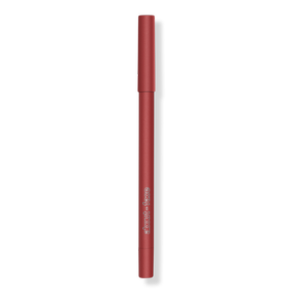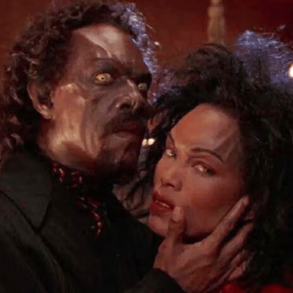Nov 6, 2023 1:12PM
Earlier this year, Greta Gerwig’s Barbie took hold of movie theaters and critical discourse like a magenta algal bloom. For months, it was almost impossible to avoid the media blitz, the box office boom, or the barrage of think pieces about the doll’s impact on the female psyche. “Who is Barbie?” we asked. “Is she a feminist? Is she a fascist?”
Barbie-mania reached South Africa, too, according to painter and collage artist Cinthia Sifa Mulanga. But over a Zoom call in August, the artist, who lives and works in Johannesburg, said she had yet to see the spectacle for herself. Mulanga doesn’t need a film to persuade her of Barbie’s cultural significance: The doll has been a presence, both literally and spiritually, in her work for years. It was Barbie—a potent symbol of the burden that Western beauty standards place on women, especially Black women—that influenced much of Mulanga’s early thinking about the precarity of modern womanhood, and has informed the distinct visual lexicon that appears in her work today. Using paint, charcoal, and collage, Mulanga builds up richly colored, densely referential images that place Black women in luxe, Dreamhouse-like interiors, surrounded by objects of consumerist desire and emblems of capitalist anxiety—each character seeking comfort, with varied results.
Portrait of Cinthia Sifa Mulanga in the studio. Photo by Andile Buka. Courtesy of Cinthia Sifa Mulanga and Latitudes Online.
Advertisement
Mulanga started her artistic engagement with Barbie while studying printmaking at Johannesburg’s Artist Proof Studio, after receiving an assignment to develop a body of work around a sentimental object from her life. But she’s been a careful observer of visual culture, particularly feminine-coded visual culture, since childhood. At her mom’s salon in the Democratic Republic of the Congo, where she was born, Mulanga first gained exposure to the mechanisms of the fashion and beauty industries by watching women receiving hair, makeup, and nail services. “Back then, I didn’t know that was art,” she recalled. That realization came later on, when Mulanga’s formal art education helped clue her in to the seductive potential of self-presentation and popular media—the way that “art finds its way into our daily lives, like [in] the advertising of hair products, the movies, and cartoons,” she said.
This high-brow/low-brow sensibility is evident in Mulanga’s work, which is as likely to feature a Picasso painting as a Telfar bag; as likely to reference de Chirico as Rihanna. Clearly, it has resonated with collectors and tastemakers. In 2020, the same year that she completed her coursework at the Artist Proof Studio, Mulanga listed some of her work on Latitudes Online, a marketplace for African art, and sold all of it within a week. Also in 2020, she was featured in a group exhibition organized by the prominent curator Azu Nwagbogu at African Artists’ Foundation in Lagos. Mulanga has now had three solo exhibitions across multiple continents, including at Goodman Gallery’s Johannesburg location and Bode in Berlin; this month, she will open her fourth, “Giants,” at Latitudes Centre for the Arts in Johannesburg.
Cinthia Sifa Mulanga, installation view of “In The Becoming” at Goodman Gallery, 2022. Photo by Anthea Pokroy. Courtesy of the artist and Goodman Gallery.
These days, Mulanga—like most of us—absorbs visual culture through a screen. She conducts image research on social media, following popular design accounts like Architectural Digest and Architecture Wave to source photos of upscale domestic spaces that she takes as the starting point for her paintings. She then pairs these images with words and phrases lifted from personal notes, choosing one as a conceptual anchor (and eventual title) for each work. Pulling out her phone, Mulanga read some off some examples from her running list—“Hold yourself,” “I’m the occasion,” “Romance your life,” “I’ve been hiding her for some time”—that speak to her subjects’ ambient desire to be seen, cherished, and celebrated.
Mulanga, who toyed with the idea of pursuing journalism before committing to art, has an evident love for language, and often incorporates text into her work—though it doesn’t always reveal itself immediately. “The whole idea is to kind of slowly, softly pull the audience towards the work,” Mulanga explained. “The color pulls you in slowly. And then there’s these hints of surprises that you only see when you’re closer to it.”
Cinthia Sifa Mulanga, Consensual and Consumption, 2021. Courtesy of the artist and Latitudes Online.
Advertisement
Consensual and Consumption (2021), for example, features a seated woman in red pants and stilettos, tucking into what appears to be a piece of pizza. Upon closer inspection, the slice of pie is revealed to be a triangle-shaped collage splicing images of corseted women with phrases like “cosmetic practices” and “get thin,” symbolizing the way that women metaphorically ingest oppressive messaging about their bodies. The bombardment is constant: Next to her on the couch, the woman’s phone displays a passage of text on anti-Blackness, borrowed from an essay by the writer Shayla Pierce. It reads, “…insinuating that her beauty comes from the (allegedly) non-Black part of her. All they’re effectively saying is: You’re too beautiful to just be Black.”
Mulanga based this pizza-eating figure on Chloe Bailey, the singer who was mentored by Beyoncé and signed to her record label at age 17. Bailey’s journey of maturing in the public eye while being subjected to intense scrutiny struck a chord with Mulanga, the artist said.
Cinthia Sifa Mulanga, Almost Clearly, 2022. Courtesy of the artist and Latitudes Online.
Sometimes, Mulanga’s women are famous; sometimes, they are likenesses of Mulanga herself, or her sister; sometimes, they are anonymous. But even when her subjects are well known, Mulanga often distorts their features to make them less recognizable. In this way, the artist holds open the interpretive space around her work: These are not portraits of individuals, but investigations of the cultural environment in which they operate. Her images are full of ambivalence—the allure of beautiful objects butting up against the systems of exclusion and social stratification that they represent—and Mulanga is accommodating of multiple readings. “Either I haven’t been able to really be clear on what specific emotion should be taken from the works,” she offered, “or it’s just that I want the viewer to add on their own emotion to the work.”
Mulanga’s openness to interpretation of her work does not mean that she leaves her subjectivity out of it, though. Her paintings circle around ideas of belonging and acceptance, themes that she associates with her experience as an immigrant. When Mulanga was nine, she and her family fled political violence in her home country; upon arriving in South Africa, she felt intense culture shock that was eased only by the support of her mom and siblings. “After school, my sister would wait for me and my brother would wait for me and then [we would] all walk back home together.…The experience was terrifying, but made a bit more bearable because we were experiencing these things together,” she said. “‘When are we ever gonna just settle down?’” she recalled wondering—a question that she now extrapolates to a struggle shared by women more broadly, in relation to the gymnastics we perform to look, act, and work according to society’s expectations.
Cinthia Sifa Mulanga, Accessive, 2022. Courtesy of the artist and Latitudes Online.
These pressures can be particularly acute for a young artist when her livelihood becomes intertwined with personal branding and exposure. Mulanga references this paradigm in Accessive (2022), the title of which is a portmanteau of “access” and “excessive.” In it, a long dining table overflows with a decadent spread of food, wine, beauty products, and art objects—a possible reference to the material extravagance of the art world—and a framed painting on the wall above features a neoclassical female figure sprawled over a laptop. The figure’s head is in her hand, and “like” and “follow” icons hover over her screen—evidence of both her attachment to her social media metrics, and the exhaustion that inevitably occurs “when an artist pours their heart out on this device,” as Mulanga put it.
There’s no question that increased visibility has its perks: For Mulanga, it’s brought opportunities like a commission from Gucci last year, for which she produced a new work featuring the fashion house’s Diana tote bag. Mulanga is also developing a new collection of wearable silks with the South African brand Guillotine. But as she navigates her accelerating career, she is being careful to guard against burnout. “I used to work very fast when I started, but I think it got really exhausting,” she explained. “Recently I started to take actual breaks. And it really helps because, when I’m not making work, I either go see other shows, or just life in general really inspires my work.” Like her subjects, Mulanga is searching for peace and stability—on and off the canvas.
The Artsy Vanguard 2023
The Artsy Vanguard is our annual feature recognizing the most promising artists working today. The sixth edition of The Artsy Vanguard features 10 rising talents from across the globe who are poised to become the next great leaders of contemporary art. Explore more of The Artsy Vanguard 2023 and browse works by the artists.
Olivia Horn
Olivia Horn is Artsy’s Associate Managing Editor.
Header: Cinthia Sifa Mulanga, from left to right: “Not yet outside I,” 2023; “At last, we outgrow,” 2023; “Accessive,” 2022. All courtesy of the artist and Latitudes Online.
This post was originally published on this site be sure to check out more of their content.





